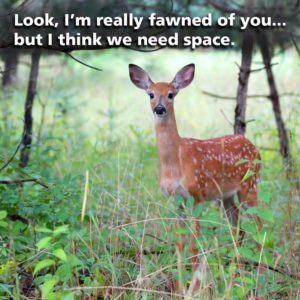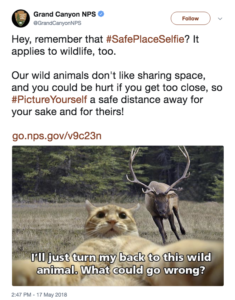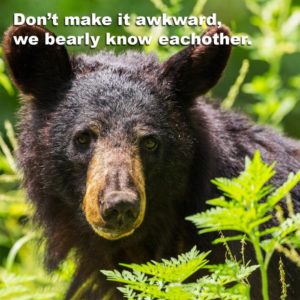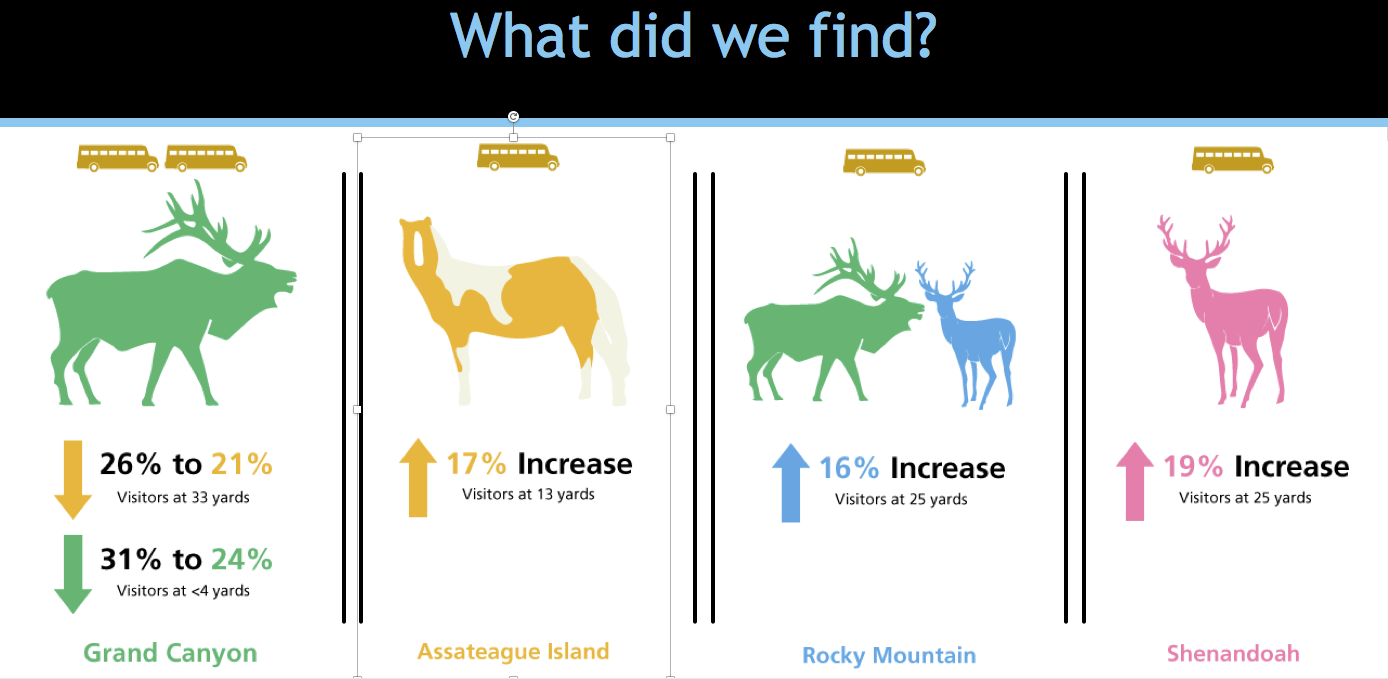As the national parks brace for throngs of summer visitors hoping to catch a glimpse of wildlife, Colorado State University faculty and students are improving the way parks keep people from getting too close to wild animals.
Katie Abrams, assistant professor in the Department of Journalism and Media Communication, and Tara Teel, professor in the Department of Human Dimensions of Natural Resources, teamed up with the National Park Service to tackle the issue from a communications standpoint: What’s the most effective way to warn people about the dangers and problems posed by getting too close to animals in the parks?
People want to have an exciting wildlife experience and get a picture of it. But that doesn’t mean you have to get close. Some people think they have to zoom in with their feet, and they don’t know what a safe distance is. — Abrams says
The campaign
The duo developed a communication campaign and evaluated how well it worked in four national parks from June to October 2017. They targeted Assateague Island National Seashore, Grand Canyon National Park, Rocky Mountain National Park, and Shenandoah National Park. The materials and methods that Abrams and Teel developed successfully increased the number of people keeping a safe distance from wildlife by at least 16 percent in three of the four parks.
In addition to helping train park staff on key messaging, they worked with several CSU graduate students and a local marketing agency to develop a host of printed and digital materials around the theme “Sometimes the best relationship is a long-distance relationship.” The materials provide tips on things like how to estimate safe distances using the length of a bus, and stabilizing one’s arm to take good photos with a smartphone’s zoom feature.
One graphic shows a deer with the phrase, “Look, I’m really fawned of you, but I think we need space.” Another shows a close-up of a bear’s face with the statement, “Don’t make it awkward, we bearly know each other.” At Assateague, which is famous for its wild ponies, catchphrases included “You can’t foal us” and “Whoa, hold your horses!”
 Guidance for parks
Guidance for parks
Abrams explains that messages like “Keep wildlife wild” are simply too broad; parks have to be more specific about preferred visitor behaviors. Another of the team’s recommendations for the parks’ messaging is to focus more on personal benefit rather than fear, and offer tools to concretely visualize safe wildlife distances.
Abrams adds that when advised to not feed wildlife, some people think that just refers to packaged or “human” food. Plucking apples from nearby trees to feed animals is not OK either, because it emboldens animals and makes them comfortable approaching people.
 Several of the parks have incorporated the CSU team’s recommendations. On May 17, Grand Canyon officials tweeted an image developed as part of the campaign: a cat appearing to take a selfie with a charging elk, accompanied by the message “I’ll just turn my back to this wild animal. What could go wrong?” The tweet links to several safe wildlife distance tips that the CSU team advised:
Several of the parks have incorporated the CSU team’s recommendations. On May 17, Grand Canyon officials tweeted an image developed as part of the campaign: a cat appearing to take a selfie with a charging elk, accompanied by the message “I’ll just turn my back to this wild animal. What could go wrong?” The tweet links to several safe wildlife distance tips that the CSU team advised:
- Follow the rule of thumb: if you can cover the entire wild animal with your thumb you’re at a safe distance. This distance is usually 25 yards from most wildlife and 100 yards from large wildlife.
- Use binoculars or a camera with zoom to view animals from a safe distance. To steady your shot, rest your elbows on your ribcage or knees.
- Stay quiet and still on the safe side of railings — noise and quick movements can make wildlife feel threatened.
 Word spreads
Word spreads
Other national parks have now contacted Abrams for assistance. Glacier National Park used the CSU team’s input to develop trading card-sized handouts with tips on wildlife safety.
Abrams will present a paper on the project at a conference in August before submitting the research for journal publication.
The CSU graduate students involved in the project were Caitlin Evans and Heather Young of journalism and media communication and Ashley Gramza of the Department of Fish, Wildlife, and Conservation Biology.
SPREAD THE NEWS
COMMENT, Like, Follow & SHARE @I70Scout
CURRENT EDITION
WEATHER & TRAFFIC PUZZLES RECENT NEWS ADVERTISE WITH US


 Boating Requirements and Safety:
Boating Requirements and Safety:







